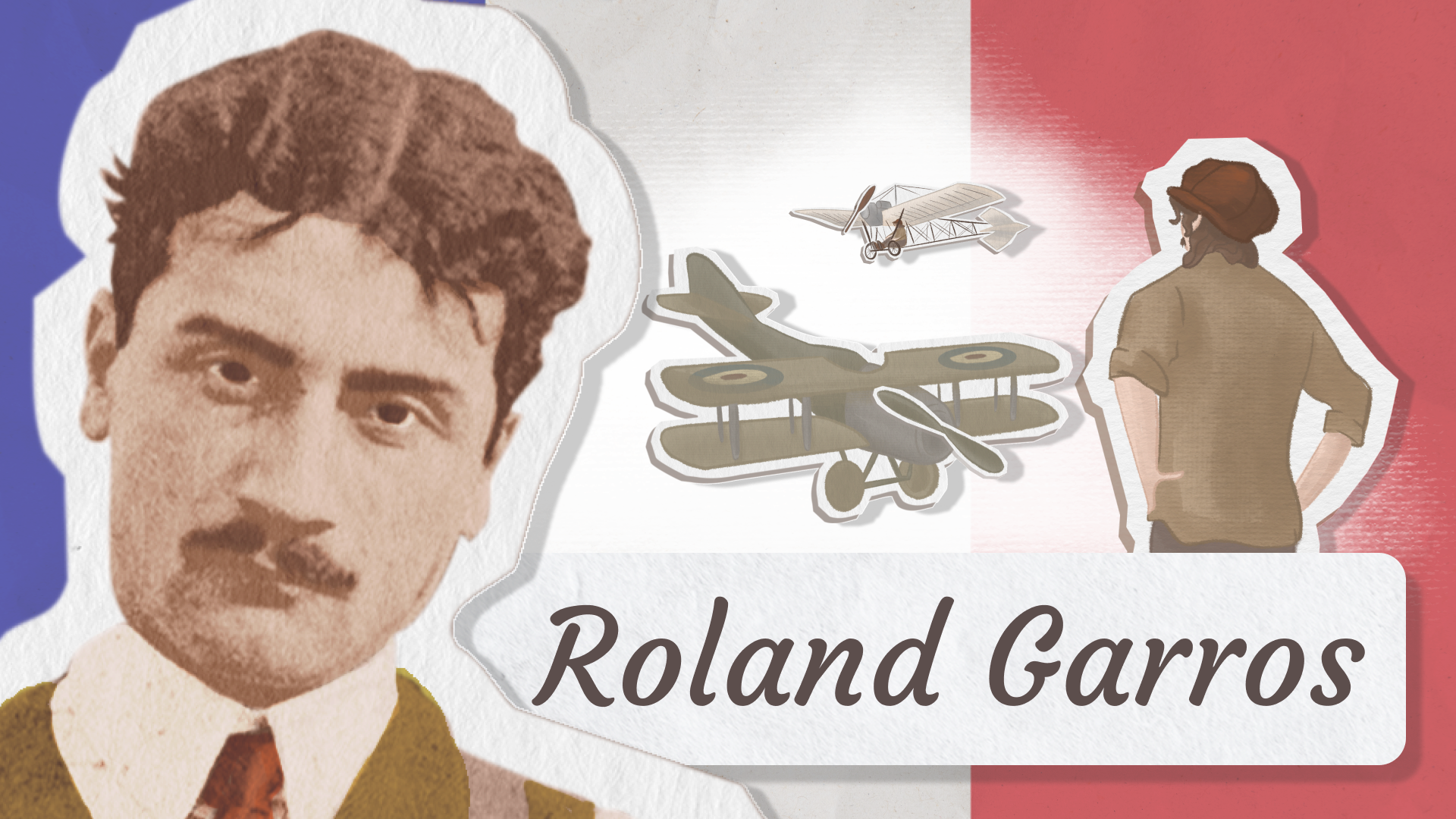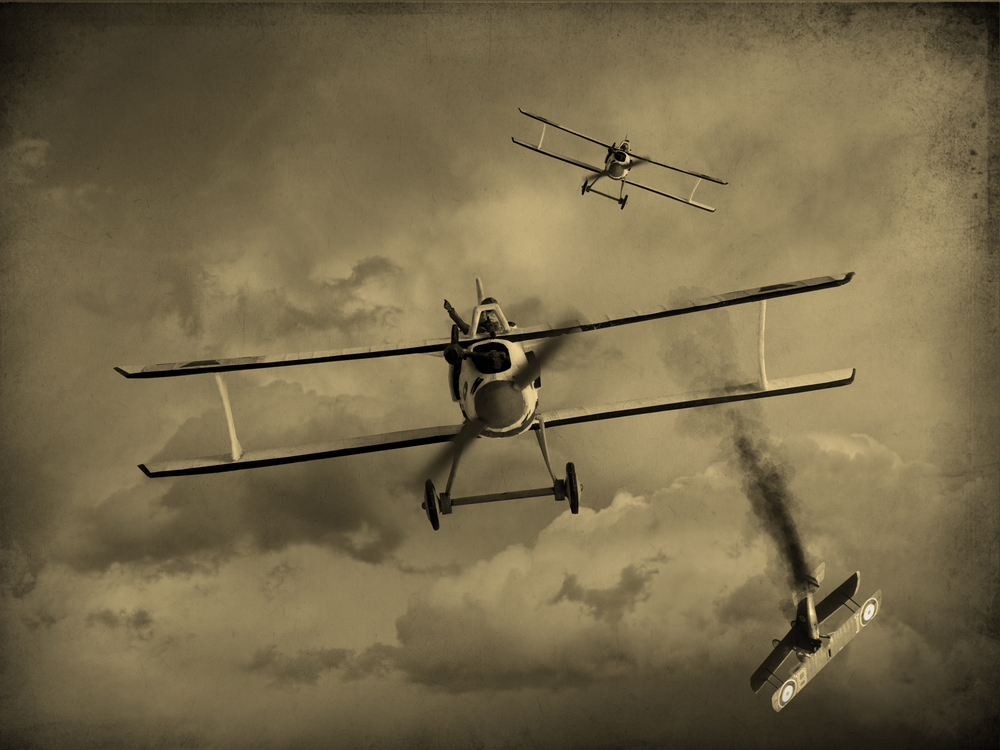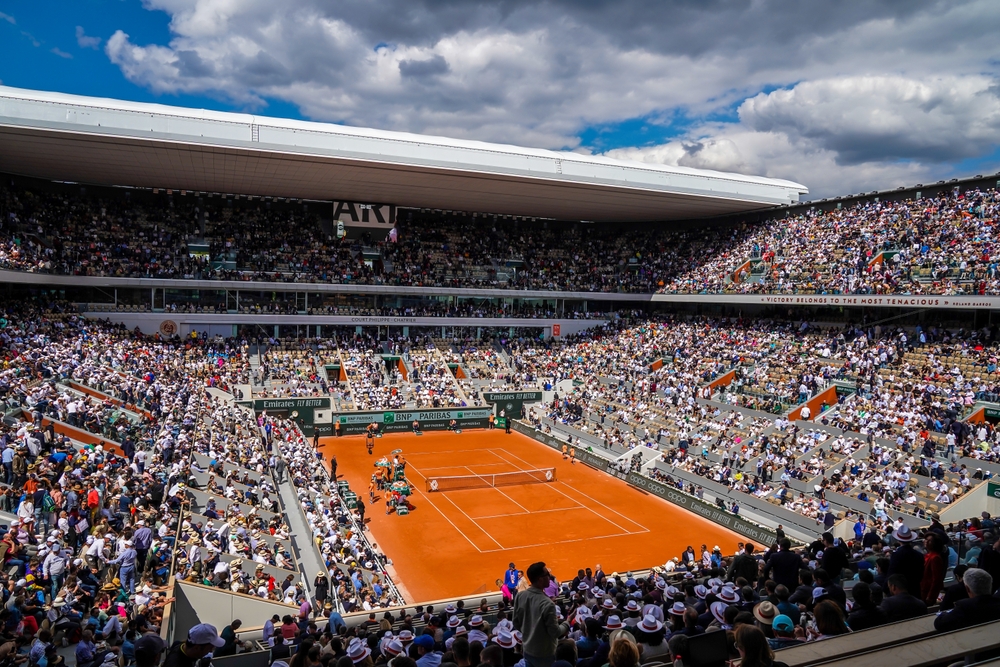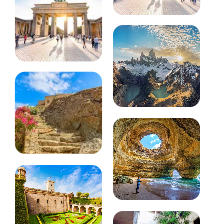Roland-Garros: who is behind the name of this international tournament?

Portrait of a man with his head in the clouds
When you think of Roland Garros, you obviously think of the famous tennis tournament. But what do you know about the man behind the name? Did you know that he was from Reunion Island? An aviator? And that he played rugby, not tennis! Let’s set the record straight and introduce you to the great Roland Garros.
A free childhood
Roland was born in Saint-Denis in 1888. He spent part of his youth in Vietnam, where his father, a lawyer, had opened a practice, before being sent to France to study. He was only twelve years old when he found himself propelled into metropolitan France on his own and in total autonomy. Maybe that’s why he’ll be so resourceful in life! He discovered a passion for sport, particularly cycling and later rugby. A graduate of HEC, he also took up mechanics and motor sport. His father cut him off because he didn’t want to follow the family’s vocation as a lawyer! No matter, Roland was a free and ingenious man. He designed a sports car, became a company director at the age of 21 and was finally able to stand on his own two feet. And it was in 1909, when he attended the Grande Semaine de l’Aviation in Champagne, that he discovered what was to become his lifelong passion: aviation. The fortune he made from his flourishing car business enabled him to buy the cheapest but most dangerous flying machine: the Demoiselle Santos-Dumont, also known as the man-killer. At the time, there were no flying schools. Enthusiasts and hotheads, often the same people, learnt alone, at their own risk.
A hero who made history
He travelled to the United States and Mexico to take part in air shows. He was nicknamed the cloud kisser. In France, he became a hero after winning the Grand Prix at the Circuit d’Anjou and went down in history after making the first successful crossing of the Mediterranean. When war broke out in 1914, he enlisted and excelled as an air force pilot. But on 18 April 1915, his plane was hit and he was taken prisoner in Germany. Disguised as an officer, he managed to escape to France, where he was awarded the Légion d’honneur. But on 5 October 1918, five weeks before the Armistice and on the eve of his 30th birthday, his plane exploded in mid-air and crashed in the Ardennes. A short life, but one that seemed so long and so full!
Why a tennis stadium?
In fact, it all started with Emile Lesieur, a friend of Roland’s with whom he went to HEC business school. One day, Emile became the new president of the prestigious Stade Français association. At the time, a new stadium was to be built to host the Davis Cup. He ordered the stadium to be named after his late friend. It was non-negotiable. This is how the name of one of France’s greatest aviators became forever linked to tennis!
In conclusion
Roland Garros, before being associated with one of the tournaments most eagerly awaited by tennis players the world over, is first and foremost the name of one of the most important figures in the history of aviation. A native of Reunion Island who not only fought alongside France against the enemy and developed innovative aircraft, but also had the courage to cross the Mediterranean Sea for the first time! What a hero…
200 audioguided tours for cities all around the world
Download


